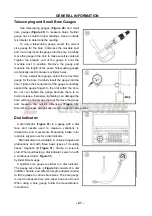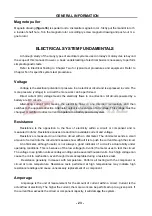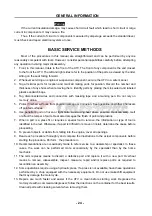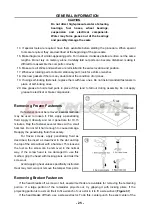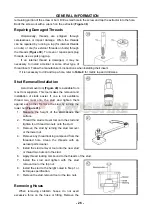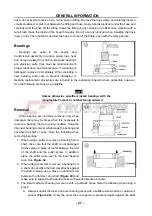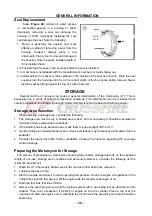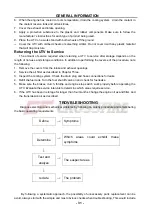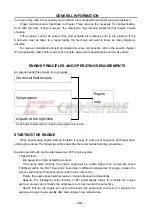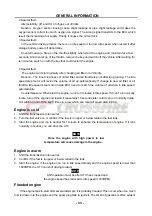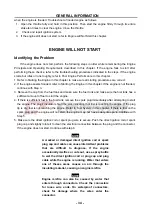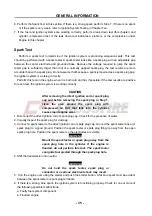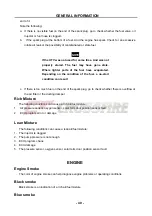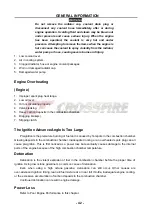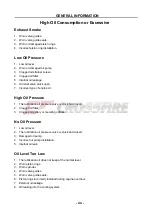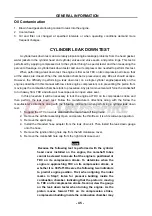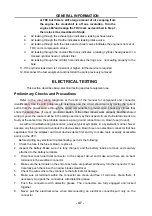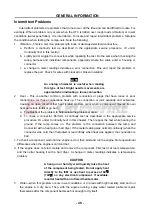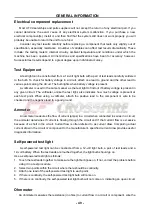
GENERAL INFORMATION
- 34 -
when the engine is flooded. Troubleshoot a flooded engine as follows:
1. Open
the
throttle
fully
and
hold
in
this
position
.
Then
start
the
engine
firmly
through
its
entire
stoke ten times to clear the engine. Close the throttle.
2. Check and repair ignition system.
3. If
the
engine
still
does
not
start
,
refer
to
Engine
will
Not
Start
this
chapter
.
ENGINE WILL NOT START
Identifying the Problem
If the engine does not start, perform the following steps in order while remembering the Engine
Principals and Operating Requirements described in this chapter. If the engine fails to start after
performing these checks, refer to the troubleshooting procedures indicated in the steps. If the engine
starts, but idles or runs roughly, refer to Poor Engine Performance in this chapter.
1. Refer to Starting the Engine in this chapter to make sure all starting procedures are correct.
2. If the engine seems flooded, refer to Starting The Engine in this chapter. If the engine is not flooded,
continue with Step 3.
3. Remove the cap from the fuel tank and make sure the fuel tank and make sure the fuel tank has a
sufficient amount of fuel to start the engine.
4. If there is sufficient fuel in the fuel tank, remove the spark plug immediately after attempting to start
the engine. The plug’s insulator should be wet, indicating that fuel is reaching the engine. If the plug
tip is dry, fuel is not reaching the engine. Refer to Fuel System in this chapter. If there is fuel on the
spark plug and the engine will not start, the engine may not have adequate spark. Continue with
Step 5.
5. Make sure the direct ignition coil or spark plug wire is secure. Push the direct ignition coil or spark
plug cap and slightly rotate it to clean the electrical connection between the plug and the connector.
If the engine does not start. Continue with step 6
NOTE
A cracked or damaged direct ignition coil or spark
plug cap and cable can cause intermittent problems
that are difficult to diagnose. If the engine
occasionally misfires or cuts out, use a spray bottle
to wet the direct ignition coil or plug cap and plug
cable while the engine is running. Water that enters
one of theses areas causes an arc through the
insulating material, causing an engine misfire.
NOTE
Engine misfire can also be caused by water that
enters through connectors. Check the connectors
for loose wire ends. On waterproof connectors,
check for damage where the wires enter the
connector.


